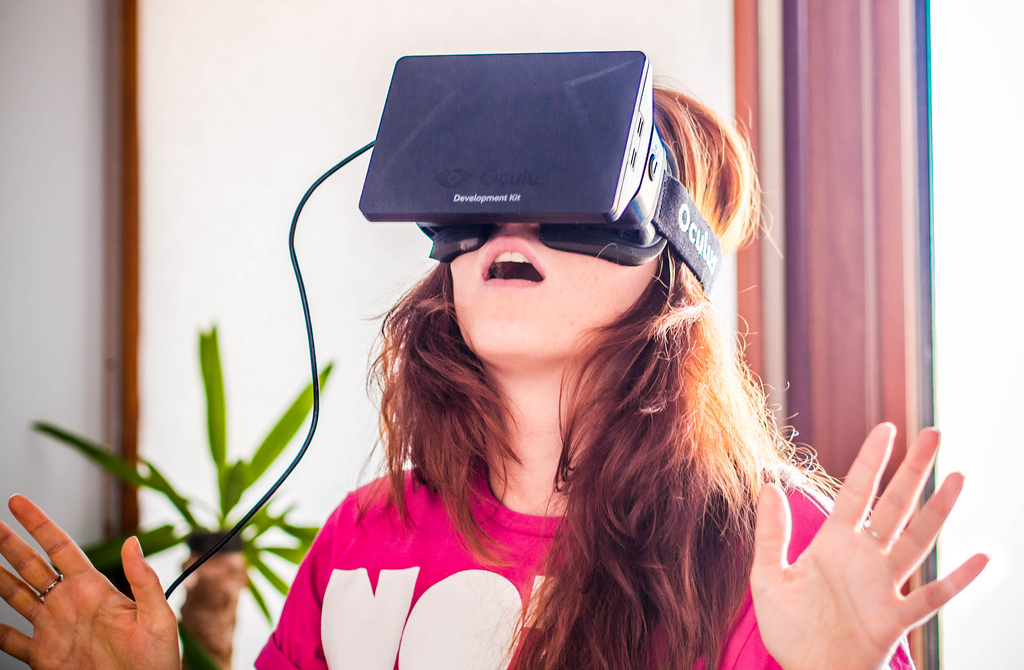 NEWS
NEWS
 NEWS
NEWS
 NEWS
NEWS
The moment you’ve been waiting for since August 1, 2012, when you first saw the exciting Kickstarter campaign, is finally here. The Oculus Rift (Facebook, Inc.), arguably the most anticipated virtual reality product of all time, is finally shipping out to customers. After four years of development, and refining, and tweaking, does it live up to all the hype? The short answer is no. It’s an important device, nonetheless, because it jump started the virtual reality industry.
Here’s everything you need to know about the Oculus Rift. The good, bad, and the ugly.
The Oculus Rift is one of the best looking, and most comfortable devices you’ll ever let sit on your face. The company created close to 500 prototypes before they settled on the final design. The goal was to create a headset that was light and comfortable enough to allow the user to forget it was on, in order to create a truly immersive experience.
They were successful. It only weighs a pound and a half, and once it’s adjusted to fit your face, it’s easy to slip on and off. The Oculus headset contains a pair of lenses, several motion sensors, built in earphones, and two 1200 x 1080 OLED panels.
Oculus spent a considerable amount of time on getting the device’s outward appearance right, but the view from inside is where it really shines. The virtual world you step into is adjusted ever so slightly, 90 times per second, depending on how you move, rotate, or tilt your head. It’s so smooth that your suspension of disbelief is almost instantaneous. The Oculus already has over 30 virtual reality games available in the Oculus Store, as well as a huge selection of 360 degree videos, and gorgeous 360 degree photos.
If it looks so good, what is there not to love? Quite a few things, unfortunately.
The Oculus Rift is not inexpensive by any stretch of the imagination. The device itself will set you back $599. But wait, there’s more. The Oculus requires a high end gaming PC to work. If you don’t already have one, you can expect to pay somewhere in the neighborhood of $1,500 to get what you need. That’s a considerable investment to shell out just to play a few virtual reality games.
Oculus comes with an Xbox One controller and a smaller, basic controller, but neither one of them allows users to reach out into the virtual world and touch things with their hands. That will require the Oculus touch hand motion controller, which won’t be available until later this year. The price for these controllers hasn’t been announced yet, but it’s pretty safe to assume that they won’t be cheap.
When you look at the total cost of ownership, you might end up deciding that this is a toy that’s more suited for the Rich Kids of Instagram crowd. Will average Americans be willing to spend this much money for virtual reality? That remains to be seen.
The Oculus Rift has to be tethered at all times to a PC. You can explore the vast, virtual terrain, but only as far as the tether allows you. Sure, you have 13 feet of cable, which gives you a decent amount of room in which to move about, but the fact is, you are limited. You won’t be able to see it, since you’ll be in the virtual world, but try your best not to get wrapped up in or trip over the tether cable.
The Oculus comes with a Rift sensor that uses infrared technology to track users’ movements in 3D. Once you get outside its range, the virtual world quits working. There’s no warning that says you’re nearing the end of the world. You’ll find out you got there when the world breaks. So much for the immersive experience.
Save your money. The Oculus Rift isn’t worth the price of admission.
Instead, consider a Samsung Gear VR, the budget virtual reality experience. At $99, it’s a fraction of the cost of the Oculus Rift, even though it’s powered by Oculus virtual reality technology. It does require one of several models of Samsung’s Galaxy smartphones, so that could be an additional cost, if you don’t already have one.
Having demoed both products, I’ll admit that the Gear VR’s display isn’t quite as good as the Rift’s. It’s pretty close, though. And there’s no tether to deal with. You can swivel around in a chair as many times as you want without worrying about getting tangled up. The Gear VR doesn’t have an infrared sensor to track your movement, so unlike the Oculus, where you can move all around in a 3D space, the Gear VR only lets you swivel in place, and move and tilt your head. For now. That limitation will be lifted in the near future with add on technology.
A Dallas based startup called IndoTraq LLC has developed technology that allows the Gear VR to move around in virtual space, just like the Oculus. Indoors, the coverage area can span the size of a basketball court, and outdoors, it can span the size of a football field. Unlike the Oculus, it gives users a visual cue when they’re nearing the virtual border.
Hardcore gamers might want to stick with the Oculus, if they can afford it. For casual users, the Gear VR is probably a better choice.
Support our mission to keep content open and free by engaging with theCUBE community. Join theCUBE’s Alumni Trust Network, where technology leaders connect, share intelligence and create opportunities.
Founded by tech visionaries John Furrier and Dave Vellante, SiliconANGLE Media has built a dynamic ecosystem of industry-leading digital media brands that reach 15+ million elite tech professionals. Our new proprietary theCUBE AI Video Cloud is breaking ground in audience interaction, leveraging theCUBEai.com neural network to help technology companies make data-driven decisions and stay at the forefront of industry conversations.